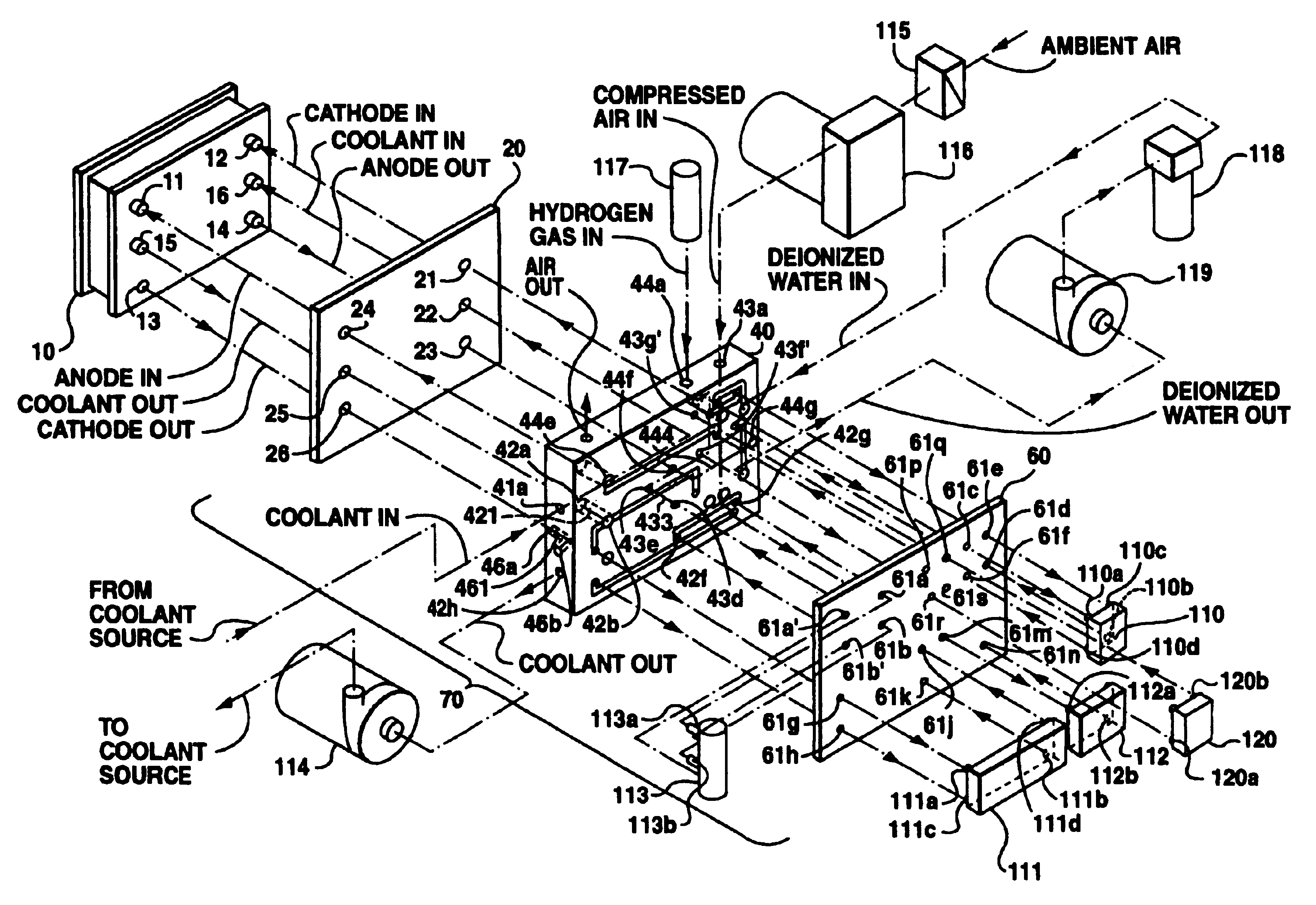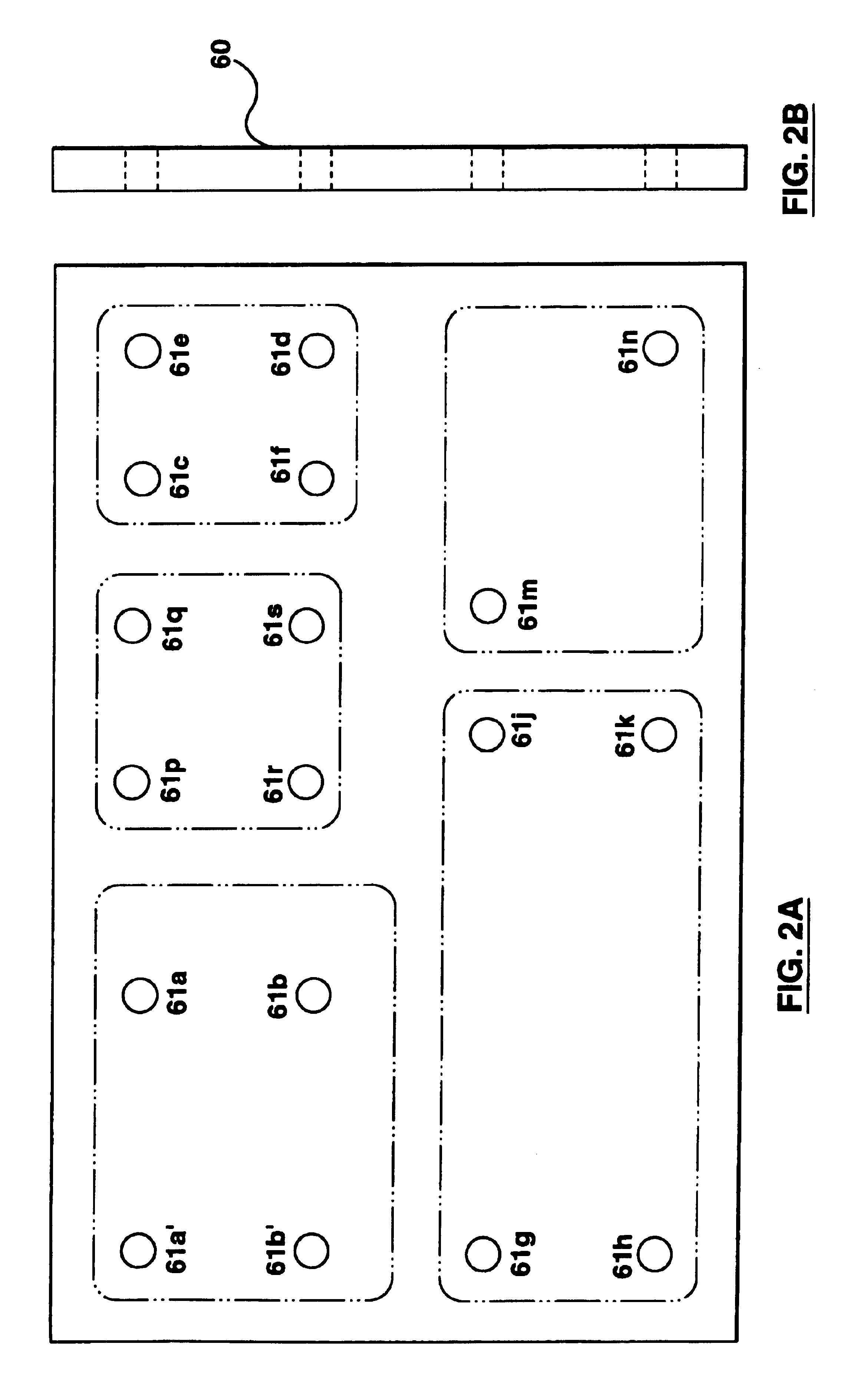Manifold for a fuel cell system
a fuel cell and manifold technology, applied in the field of manifolds for fuel cell systems, can solve the problems of increasing parasitic load, poor system efficiency, and significant energy loss in lines or conduits, and achieve the effects of reducing the loss of thermodynamic and fluid flow in the system, and reducing the size and weight of the fuel cell system
- Summary
- Abstract
- Description
- Claims
- Application Information
AI Technical Summary
Benefits of technology
Problems solved by technology
Method used
Image
Examples
Embodiment Construction
Now referring to FIG. 1, in which the basic arrangement of manifold assembly 70 according to the first embodiment of the present invention is shown, the manifold assembly 70 comprises of three individual plates. FIG. 1 also shows a fuel cell stack 10 having three inlets and three outlets, specifically, an anode inlet 11 for fuel gas, typically hydrogen, an anode outlet 14 for the fuel gas, a cathode inlet 12 for oxidant gas, typically oxygen or air, a cathode outlet 13 for oxidant gas, a coolant inlet 16 and a coolant outlet 15. It should be appreciated that the fuel cells in the fuel cell stack can be any type of fuel cell, such as, proton exchange membrane fuel cells, solid oxide fuel cells, direct methanol fuel cells, etc. The type of the fuel cells will not affect the design of the manifold according to the present invention.
In this embodiment, the manifold assembly 70 has three plate layers, namely a front plate 60, a middle plate 40 and a back plate 20. The back plate 20 is fo...
PUM
| Property | Measurement | Unit |
|---|---|---|
| electromotive force | aaaaa | aaaaa |
| electrical current | aaaaa | aaaaa |
| electrical power | aaaaa | aaaaa |
Abstract
Description
Claims
Application Information
 Login to View More
Login to View More - R&D
- Intellectual Property
- Life Sciences
- Materials
- Tech Scout
- Unparalleled Data Quality
- Higher Quality Content
- 60% Fewer Hallucinations
Browse by: Latest US Patents, China's latest patents, Technical Efficacy Thesaurus, Application Domain, Technology Topic, Popular Technical Reports.
© 2025 PatSnap. All rights reserved.Legal|Privacy policy|Modern Slavery Act Transparency Statement|Sitemap|About US| Contact US: help@patsnap.com



